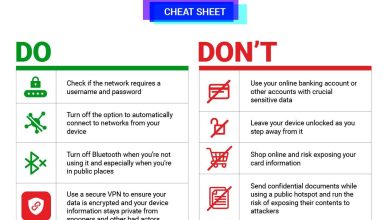Demystifying IP Addresses and Their Functions

“`html
Demystifying IP Addresses and Their Functions: Your Ultimate Guide
Introduction
Ever wondered how your computer connects to the internet and communicates with other devices? The answer lies in a fundamental technology called the Internet Protocol (IP) address. Frequently enough hidden behind the scenes, IP addresses are the unsung heroes of the digital world, enabling seamless dialog and data transfer across the vast expanse of the internet. Much like your home address directs mail to your doorstep, an IP address serves as a unique identifier for your device on a network, enabling it to send and receive details.
In this comprehensive guide, we’ll dive deep into the world of IP addresses, unraveling their intricacies and shedding light on their crucial functions. Forget the jargon and complex technicalities; we’ll break down the concept in a simple, easy-to-understand manner, making it accessible to everyone, irrespective of their technical background. Whether you’re a curious internet user, a budding tech enthusiast, or a seasoned IT professional seeking a refresher, this article will provide you with a solid understanding of IP addresses and their significance in today’s interconnected world.
What Exactly is an IP Address?
Think of an IP address as a digital postal code for your devices. It’s a unique numerical label assigned to every device connected to a network that uses the Internet Protocol for communication. This includes your computer, smartphone, tablet, smart TV, and even your smart fridge! Just as your home address ensures that letters and packages are delivered to the correct location, an IP address ensures that data packets are routed to the correct device on the internet.
You can usually obtain your IP address from your ISP (Internet Service Provider). For most home users, the IP address assigned by the ISP is dynamically assigned.Therefore, it may change from time to time. For businesses, though, it is indeed normal to assign fixed IP addresses for servers.
An IP address is typically composed of a series of numbers separated by periods (e.g., 192.168.1.1). It may look like a random string of digits, but each part of the IP address carries specific information about the network and the device itself.
The different Types of IP Addresses: IPv4 and IPv6
There are two primary versions of IP addresses in use today: IPv4 and IPv6.Let’s take a closer look at each:
IPv4 (internet Protocol Version 4)
IPv4 is the most widely used version of IP addresses.It uses a 32-bit address format, which allows for approximately 4.3 billion unique addresses. While this seemed like a vast number when IPv4 was frist developed, the rapid growth of the internet and the proliferation of internet-connected devices have led to a shortage of available IPv4 addresses. This is what we call IPv4 exhaustion.
- Format: Four sets of numbers, ranging from 0 to 255, separated by periods (e.g., 192.168.1.1).
- Address Space: Approximately 4.3 billion unique addresses.
- current Status: Still widely used, but facing address exhaustion.
IPv4 addresses are organized in classes: Class A to Class E. Each of them, defines ranges of addresses and is reserved for different purposes, including general purpose, network testing and multicast traffic
IPv6 (Internet Protocol Version 6)
IPv6 was developed to address the limitations of IPv4 and provide a much larger pool of IP addresses. It uses a 128-bit address format, allowing for an astronomical number of unique addresses—approximately 340 undecillion (that’s 340 followed by 36 zeros!). IPv6 addresses are represented as eight groups of four hexadecimal digits, separated by colons (e.g., 2001:0db8:85a3:0000:0000:8a2e:0370:7334).
- Format: Eight groups of four hexadecimal digits, separated by colons (e.g., 2001:0db8:85a3:0000:0000:8a2e:0370:7334).
- Address Space: Approximately 340 undecillion unique addresses.
- Current Status: Gradually being adopted to replace IPv4.
In addition to solving the IP address exhaustion, IPv6 also provides enhanced security and routing efficiency.
Public vs.Private IP Addresses
IP addresses can also be classified as either public or private. Understanding the distinction between these two types is essential for grasping how devices connect to the internet and communicate with each other within a local network.
Public IP Addresses
A public IP address is an IP address that is globally unique and can be accessed directly from the internet. It’s like your house’s street address,visible to the outside world. Your internet service provider (ISP) assigns you a public IP address, which serves as the gateway for your entire home or office network to interact with the internet. When you visit a website, your public IP address is used to identify your network and route the requested data back to you.
Public IP addresses can be either: static (they do not change) or dynamic (they change from time to time), depending on the type of internet connection and your ISP policies.
Private IP Addresses
A private IP address is used within a local network, such as your home or office network, to identify devices connected to the same router. These addresses are not unique globally and cannot be accessed directly from the internet. Think of them as the internal room numbers within a building. Your router assigns private IP addresses to each device on your network, allowing them to communicate with each other without needing a unique public IP address for each device.
Private IP addresses enable multiple devices to share a single public IP address when connecting to the internet. This is achieved through a process called Network Address Translation (NAT), which we’ll discuss later.
How IP Addresses Enable Internet Communication
IP addresses play a crucial role in enabling seamless communication across the internet.Here’s a simplified breakdown of the process:
- addressing: When you send or request data over the internet (e.g., visiting a website, sending an email), your device uses IP addresses to specify the source and destination of the data.
- Routing: Network routers use IP addresses to determine the best path for data packets to travel across the internet. They act like postal workers, forwarding data packets from one network to another until they reach their intended destination. This mechanism is what we call routing paths.
- Network Address Translation (NAT): As mentioned earlier, NAT allows multiple devices on a private network to share a single public IP address. When a device on your local network sends a request to the internet, your router uses NAT to translate the device’s private IP address into your network’s public IP address.This process ensures that data packets can be correctly routed back to the originating device.
- Domain Name System (DNS): While computers use IP addresses to communicate, humans prefer to use domain names (e.g., www.exmaple.com). The Domain Name System (DNS) acts as a translator, converting user-friendly domain names into their corresponding IP addresses. When you type a domain name into your browser, your computer contacts a DNS server to retrieve the associated IP address, allowing your browser to connect to the correct website server.
This intricate dance of addressing, routing, translation, and name resolution happens behind the scenes, enabling you to seamlessly browse the web, send emails, stream videos, and engage in countless other online activities.
Static vs. Dynamic IP Addresses
IP addresses,notably public ones,can be further categorized as static or dynamic. These classifications play a significant role in how devices connect to the internet and how they are identified in online services. Let



